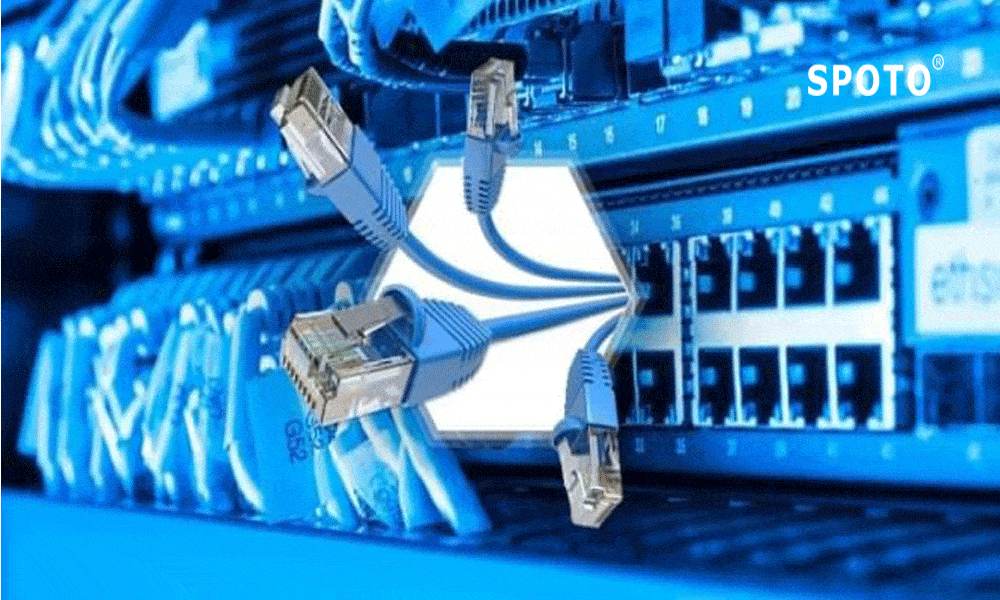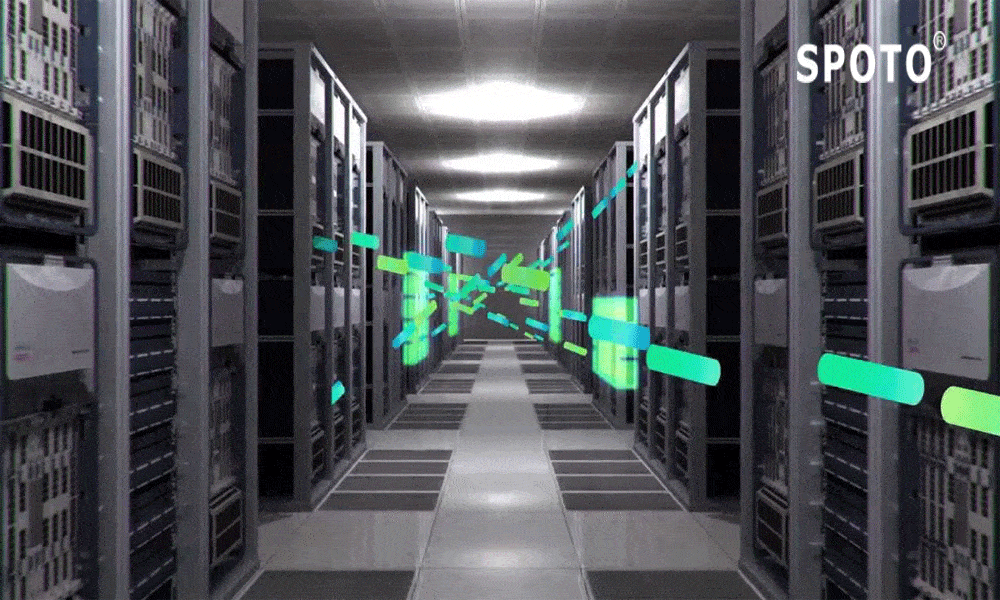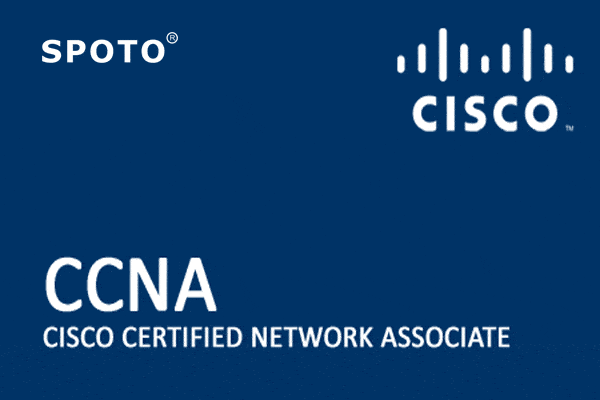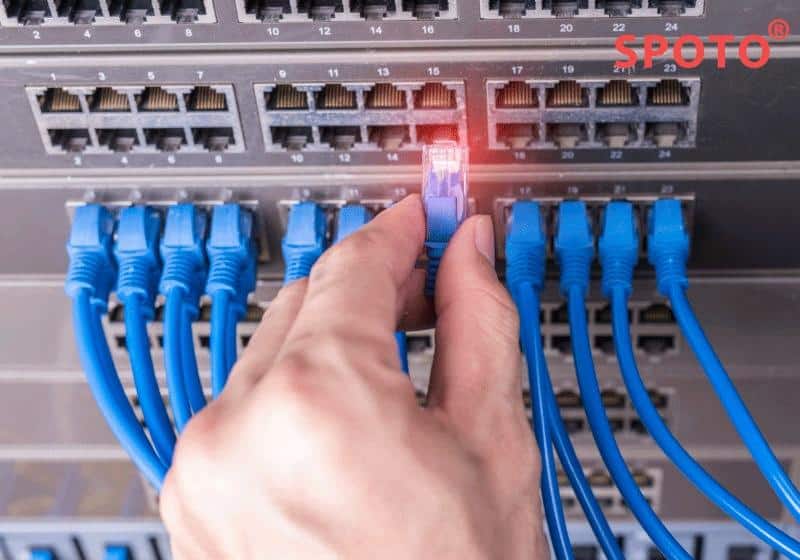-
- Cisco
- SPOTO Club
- 2024-01-18
Here are the best IT Certifications:
1.Cybersecurity Certifications
As the world grapples with this unforeseen pandemic, working indirectly is the new norm. Notwithstanding, this conveys with it a massive load of computerized risks given far-off induction to IT structure and usage of participation devices on endpoint contraptions. During a particularly crucial time, online assurance ensured specialists are the undetected yet extraordinary people, critical against potential cyberattacks going from attack alleviation to entrance testing.
2. Cloud Architect Certifications
Silly decade, no other IT space has made as much exposure, premium, and theory as conveyed registering. IDC predicts a five-year advancement speed of 22% by one year from now, with public cloud organizations worth $277B.
3. Errand Management and IT Service Management Certifications
Overall advancement in 2021 is projected at 5.4%. By and large, this would leave the GDP some 6.5% lower than in the projections pre-pandemic. In this money-related hopelessness, accomplices and customers need an affirmation that their thing is in the ownership of someone who can show the experience and expertise to portray, plan feasibly, and pass on their assignments. Besides, what better way to deal with the show this level of capacity than an insistence.
4. DevOps Engineer Certifications
With the addition well known for fast developmental methods and consistent application courses of action, the necessity for talented DevOps specialists is essentially going to increment in the coming years.
5. Informational index Admin Certifications
In the past thirty years, we've seen a vast load of database stages travels all over, yet there won't ever have been a request that informational index is a vital part for all figuring endeavors. Database testaments may not be as front line as appropriated registering or PC crime location examination. In light of everything, intelligent, skilled, and capable database specialists have reliably pursued.
6. Modernized Marketing Certifications
Associations conceivably succeed when they have to buy customers, making electronic exhibiting a fundamental piece of any business errands. As promoting has changed in the mechanized age, the necessity for specialists arranged in new capacities has grown radically.
7. Association Engineer Certifications
Organization Engineering incorporates the going with commitments:
•Evaluate, plan, and backing PC gear fragments and working systems
•Assess and ease up danger
•Examine and select developments
•Pick a sensible, authoritative arrangement
•Resolve IT issues
You could sort out some way to do all the recently referenced, through different Networking affirmations like:
•Cisco Certified Network Associate (CCNA)
•Cisco Certified Network Professional (CCNP)
•Data Systems Audit and Control Association (ISACA)
•CompTIA Network+
•RedHat Certified Engineer (RHCE)
8. Web Development Certifications
Building web experiences for the current age requires a massive load of work in the front end, similar to the back end. This can develop a long static page of plain substance to complex web applications, electronic associations, and casual local area organizations.
For more information and the basis for the test, you should insinuate SPOTO Exam Dumps, which will empower you to accomplish the whole first endeavor with the best score.
-
- Cisco
- SPOTO Club
- 2024-01-18
In order to understand the difference between both of these certifications, let’s first have an overview of both.
The CCNA Routing and Switching are considered to be an excellent starting point for your IT career. The CCNA R&S is extraordinarily popular among the learners and is also considered to be highly sought after by the IT industry. This certification is going to be validating your ability to install, configure, operate, and troubleshoot of medium-size routed as well as switched networks. Typically, the CCNA R&S would be qualifying you for the job roles which would include network technician, systems administrator, network engineer, and much more.
Cisco Certified Network Associate Routing and Switching or CCNA R&S Overview
The CCNA Routing and Switching certification are designed for entry-level networking professionals. The CCNA R&S certification would be made up of two exams, both of which are covered by the SPOTO training Institute:
• Cisco CCENT/CCNA ICND1 100-105
• Cisco CCNA ICND2 200-105
In order to earn your CCNA R&S, you would have to complete the ICND1 exam first, which results in the Cisco Certified Entry-level Network Technician or CCENT certification. The ICND1 exam would be testing your knowledge and skills in order to successfully install, operate, and troubleshoot a small branch office network, which includes the topics like the operation of IP data networks, , IP routing technologies, LAN switching technologies, IPv6, IP services (DHCP, NAT, ACLs), basic troubleshooting, and network device security.
The second exam for the CCNA R&S is the ICND2 which would be testing your skills and knowledge in order to successfully install, operate, and troubleshoot a small as well as medium sized enterprise network of branch, which would be including topics on LAN switching technologies, IP services (FHRP, Syslog, SNMP v2 and v3), IP routing technologies, troubleshooting, and WAN technologies.
The Cisco Certified Network Associate Collaboration or Cisco CCNA Collaboration certification is a blend of networking, video, and voice, skills and knowledge. The Collaboration certification which would be representing a merger of three previously separate certification pathways: Routing and Switching, Voice, and Video. With the emergence of a mobile workforce, the need for collaboration skills and expertise has ascended. The CCNA Collaboration is the first step in mastering solutions of Cisco’s collaboration. The CCNA Collaboration certification is typically associated with the roles that would be including network video administrator, IP network engineer, IP telephony (VoIP) engineer, collaboration tools engineer, and voice, unified communications (UC), or communications engineer.
Cisco Certified Networking Associate Collaboration Overview
CCNA Collaboration certification would be designed for IT professionals who are going to specialize in IP telephony, networking, and video engineering. The CCNA Collaboration is a role-focused certification intended to validate the skills of learners in meeting the ever-evolving business demands in collaboration and video skills. Though the CCNA Collaboration certification requires no formal prerequisites, some experience in networking, Cisco VoIP, video, and teleconferencing is recommended.
The CCNA Collaboration certification program focuses on the convergence of voice, video, data, and mobile applications in Cisco collaboration solutions. It equips network engineers, IP telephony professionals, and IP network engineers with the skills needed to implement Cisco's collaboration technologies effectively. In today's interconnected world, businesses rely on collaboration solutions to facilitate communication and enhance productivity. CCNA Collaboration certification is designed to meet the increasing demand for professionals who can work with voice, video, and data technologies seamlessly.
This certification program covers a wide range of topics, including implementing Cisco collaboration endpoints, codecs, Cisco IOS XE and Cisco IOS XE gateway and media resources, Cisco Unity Connection, Cisco Unified IM and Presence, and more. It ensures that candidates have the knowledge and skills required to support Cisco collaboration solutions effectively. By earning CCNA Collaboration certification, professionals position themselves as valuable assets in the industry, ready to tackle the challenges of modern collaboration technologies. It's a testament to their ability to work in line with the convergence of voice, video, data, and mobile applications, providing businesses with the communication solutions they need to thrive.
The CCNA Collaboration certification would be made up of two exams, both of which are covered by training provided by the SPOTO:
• Cisco CCNA Collaboration 210-060 CICD
• Cisco CCNA Collaboration 210-065
• CIVND1
• CIVND2
For engineers who want to develop collaboration and video skills, the CCNA Collaboration exam is considered to be a certification path that would be evolved from Cisco’s Voice and Video certifications, which would have been officially retired.
Both the certification holds quite a unique importance at their own place. You would have to check it out that which would suit your knowledge. The training of both the certification could be gain through the courses which are provided by the SPOTO institute. They provide you with the best training courses to help you out for clearing any of the Cisco Related Certification. Also, you can pass the Cisco Certification with certification programs.
-
- Cisco
- SPOTOCLUB
- 2024-01-18
1.Overview: Cisco Duo and AnyConnect VPN – Empowering Secure Remote Access
In the modern digital landscape, organizations face the challenge of ensuring secure remote access for their employees while maintaining productivity and efficiency. Cisco Duo and AnyConnect VPN, two powerful solutions from Cisco, provide a comprehensive approach to address these challenges. Cisco Duo, a leading two-factor authentication (2FA) solution, adds an extra layer of security to protect user accounts from unauthorized access. It offers a range of authentication methods, including push notifications, hardware tokens, and one-time passcodes, to verify user identities beyond traditional passwords. Cisco AnyConnect VPN, on the other hand, enables secure remote access to corporate networks and applications. It establishes encrypted tunnels between remote devices and the organization's network, ensuring data privacy and integrity during transmission. AnyConnect VPN supports various connection modes, including SSL, IKEv2, and IPSec, to accommodate different network environments and user requirements. The combination of Cisco Duo and AnyConnect VPN provides a robust security framework for organizations, allowing them to confidently extend secure access to remote workers, partners, and customers.
Benefits and Use Cases of Cisco Duo and AnyConnect VPN:
Implementing Cisco Duo and AnyConnect VPN offers numerous benefits for organizations: - **Enhanced Security:** 2FA significantly reduces the risk of unauthorized access by requiring additional verification beyond passwords. - **Simplified User Experience:** Cisco Duo's user-friendly interface and diverse authentication methods provide a seamless and convenient experience for users. - **Flexible Remote Access:** AnyConnect VPN enables secure remote access from various devices and locations, supporting a mobile and distributed workforce. - **Improved Compliance:** These solutions help organizations meet regulatory compliance requirements related to data protection and access control. - **Increased Productivity:** By streamlining remote access and enhancing security, Cisco Duo and AnyConnect VPN contribute to increased productivity and efficiency. These solutions find applications across various industries and use cases, including: - **Remote Work:** Enabling secure remote access for employees working from home or on the go. - **Partner and Customer Access:** Providing controlled access to external stakeholders, such as partners, vendors, and customers, to specific resources. - **BYOD Support:** Allowing employees to securely access corporate resources using their personal devices. - **Secure Access to Cloud Applications:** Extending secure access to cloud-based applications and services. - **Compliance and Regulatory Adherence:** Meeting industry-specific compliance requirements and regulations related to data protection and access control.
2. Deep Dive into Cisco Duo: A Comprehensive Understanding
Importance of 2FA in a Modern Security Landscape:
In today's digital era, where cyber threats are constantly evolving, implementing robust security measures is paramount. Two-factor authentication (2FA) has emerged as a crucial defense mechanism against unauthorized access and data breaches. Cisco Duo stands as a leading provider of 2FA solutions, offering a comprehensive approach to enhance security and protect sensitive information.
2FA adds an extra layer of protection by requiring users to provide two different forms of identification when logging into an account or accessing a network. This additional step significantly reduces the risk of unauthorized access, even if a hacker obtains a user's password. 2FA is particularly effective in preventing phishing attacks, where attackers attempt to trick users into revealing their credentials.
Components and Functionality: Unveiling Cisco Duo's Architecture
Cisco Duo's 2FA solution comprises several key components that work together to provide secure authentication. At the core lies the Duo Access Gateway, which acts as a central hub for managing and enforcing authentication policies. The Duo Access Gateway communicates with various authentication methods, including:
Push Notifications: Users receive a push notification on their mobile device, which they must approve to complete the authentication process.
SMS Authentication: A one-time passcode is sent to the user's mobile phone via SMS, which must be entered to gain access.
Hardware Tokens: Physical tokens, such as key fobs or smart cards, generate one-time passcodes that must be entered during authentication.
Biometric Authentication: Fingerprint or facial recognition can be used as a secure authentication method.
Cisco Duo's architecture is highly flexible and can be integrated with a wide range of applications, including cloud services, VPNs, and web applications. This integration enables organizations to enforce consistent authentication policies across their entire IT infrastructure.
Deployment and Integration: Seamlessly Implementing Cisco Duo
Deploying and integrating Cisco Duo with various platforms is a straightforward process. Organizations can choose from a variety of deployment options, including on-premises, cloud-based, or hybrid deployments. The Duo Access Gateway can be easily integrated with existing identity providers, such as Active Directory or LDAP, to leverage existing user credentials.
Cisco Duo also offers a range of pre-built integrations with popular applications and services, simplifying the deployment process. These integrations enable organizations to quickly and easily extend 2FA protection to their critical applications and resources.
With its robust architecture, flexible deployment options, and extensive integration capabilities, Cisco Duo provides a comprehensive 2FA solution that meets the security needs of modern organizations.
3. Comprehensive Guide to Cisco AnyConnect VPN:
Cisco AnyConnect VPN stands as a cornerstone of secure remote access, enabling organizations to extend their private networks to remote users seamlessly. This section delves into the intricacies of AnyConnect VPN, exploring its connection modes, traffic management capabilities, and support for mobile and remote workforces.
Unveiling the Modes of Connection:
AnyConnect VPN offers a versatile range of connection modes, each tailored to specific use cases and network environments. These modes include:
SSL (Secure Sockets Layer): SSL VPN establishes a secure tunnel over port 443, making it ideal for scenarios where traditional VPN protocols are blocked or restricted.
IKEv2 (Internet Key Exchange version 2): IKEv2 excels in mobile environments, providing fast reconnection capabilities and seamless roaming between networks.
IPSec (Internet Protocol Security): IPSec operates at the network layer, offering robust encryption and authentication for secure data transmission.
Hybrid VPN: Hybrid VPN combines the strengths of SSL and IPSec, allowing organizations to leverage the benefits of both protocols simultaneously.
Understanding Traffic Management:
AnyConnect VPN incorporates sophisticated traffic management features that enhance network efficiency and security. These features include:
Split Tunneling: Split Tunneling enables selective routing of traffic, allowing certain applications or resources to bypass the VPN tunnel while others remain encrypted.
Network Access Control (NAC): NAC enforces granular access policies based on user identity, device type, and network location, ensuring that only authorized users and devices can access specific network resources.
Role-Based Access Control (RBAC): RBAC assigns different levels of access privileges to users based on their roles within the organization, ensuring that users can only access resources relevant to their job functions.
Mobile and Remote Workforce Support:
AnyConnect VPN is meticulously designed to cater to the unique needs of remote workers and mobile devices. Its key features in this regard include:
Cross-Platform Compatibility: AnyConnect VPN supports a wide range of devices and operating systems, including Windows, macOS, iOS, and Android, ensuring seamless connectivity for users regardless of their device preferences.
Automatic Reconnection: AnyConnect VPN automatically reconnects users to the VPN tunnel in the event of a temporary network disruption, minimizing disruptions to productivity.
Adaptive Bitrate Streaming: AnyConnect VPN optimizes video and audio streaming quality based on available bandwidth, ensuring a smooth and uninterrupted experience for users accessing multimedia content.
4. Deployment Strategies and Requirements:
Prerequisites and Compatibility:
Before embarking on the deployment journey, it is essential to ensure that your infrastructure meets the necessary prerequisites and compatibility requirements. These include:
Hardware Requirements: A stable and reliable server infrastructure capable of handling the anticipated load and traffic volume.
Software Requirements: Compatible operating systems, such as Windows Server, Linux, or macOS, and the latest versions of Cisco Duo and AnyConnect VPN software.
Network Configuration: Proper firewall configurations, network segmentation, and routing policies to facilitate secure remote access.
User Devices: Compatible devices, including laptops, desktops, smartphones, and tablets, with the latest operating systems and security updates.
Step-by-Step Deployment Process:
To ensure a smooth and successful deployment, follow these comprehensive steps:
Prepare the Infrastructure: Set up the necessary servers, configure network settings, and install the required software components.
Configure Cisco Duo: Configure the Duo Access Gateway, enable two-factor authentication (2FA) methods, and integrate with your identity provider.
Deploy AnyConnect VPN: Install AnyConnect VPN software on user devices, configure VPN profiles, and establish secure connections to the corporate network.
Integrate with Existing Systems: Integrate Cisco Duo and AnyConnect VPN with your existing security infrastructure, including firewalls, intrusion detection systems (IDS), and security information and event management (SIEM) tools.
Test and Validate: Conduct thorough testing to verify the functionality and security of the deployed solutions. Ensure that remote users can securely access authorized resources.
Provide User Training: Train users on how to use Cisco Duo and AnyConnect VPN, emphasizing the importance of strong passwords, 2FA, and secure remote access practices.
Troubleshooting and Support:
To address potential issues and ensure ongoing support, consider the following:
Common Issues and Error Messages: Familiarize yourself with common issues and error messages associated with Cisco Duo and AnyConnect VPN. Develop a troubleshooting guide to assist users in resolving common problems.
Dedicated Support Channels: Establish dedicated support channels, such as a help desk or online forum, to provide assistance to users experiencing difficulties.
Regular Updates and Patches: Stay updated with the latest software updates and security patches released by Cisco. Promptly apply these updates to maintain optimal security and performance.
Monitor and Review Logs: Regularly monitor and review logs generated by Cisco Duo and AnyConnect VPN to identify potential security incidents, performance issues, or suspicious activities.
5. Optimizing Security and Performance:
Enhanced Security Measures:
Beyond the robust security features inherent in Cisco Duo and AnyConnect VPN, organizations can further enhance their security posture by implementing additional measures:
Multi-Factor Authentication (MFA): MFA adds an extra layer of security by requiring users to provide multiple forms of identification, such as a password, a one-time code sent to their mobile device, or a biometric scan. This makes it significantly harder for unauthorized individuals to gain access to sensitive data and resources.
Role-Based Access Control (RBAC): RBAC allows organizations to define granular access permissions for different users and groups. By restricting access to only the resources and applications that are necessary for each user's role, RBAC minimizes the risk of unauthorized access and data breaches.
Network Performance Considerations:
To ensure optimal network performance when using Cisco Duo and AnyConnect VPN, organizations should consider the following:
Adequate Bandwidth: Organizations should ensure that their network infrastructure has sufficient bandwidth to support the increased traffic generated by VPN connections. This is especially important for organizations with a large number of remote workers or those who frequently transfer large files.
Efficient Routing: Proper routing configuration is crucial for optimizing network performance. Organizations should implement efficient routing protocols and ensure that VPN traffic is routed through the most optimal paths.
Load Balancing: Load balancing can help distribute VPN traffic across multiple servers, improving overall performance and reducing the risk of bottlenecks. Organizations with a large number of concurrent VPN connections should consider implementing load balancing solutions.
Continuous User Support:
Providing ongoing user support and training is essential to maximize the benefits of Cisco Duo and AnyConnect VPN. Organizations should:
User Training: Conduct regular training sessions to educate users on how to use Cisco Duo and AnyConnect VPN securely and effectively. This includes training on authentication methods, VPN connection modes, and troubleshooting common issues.
Help Desk Support: Establish a dedicated help desk or support team to assist users with any issues they may encounter while using Cisco Duo and AnyConnect VPN. This team should be well-versed in the technical aspects of these solutions and be able to provide prompt and effective support.
Documentation and Resources: Provide users with comprehensive documentation and resources, such as user manuals, FAQs, and troubleshooting guides. These resources should be easily accessible and updated regularly to ensure that users have the latest information.
By implementing these optimization strategies, organizations can enhance the security and performance of their Cisco Duo and AnyConnect VPN deployments, ensuring a seamless and secure remote access experience for their users.
6. Case Studies and Success Stories:
Real-World Applications:
Cisco Duo and AnyConnect VPN have garnered widespread adoption across diverse industries, empowering organizations to securely extend their network access to remote users and enhance their overall security posture. Here are a few compelling customer success stories that illustrate the tangible benefits of these solutions:
Healthcare: A leading healthcare provider implemented Cisco Duo and AnyConnect VPN to safeguard patient data and comply with stringent industry regulations. The solutions enabled secure remote access for healthcare professionals, allowing them to access patient records and collaborate seamlessly from anywhere.
Education: A renowned university deployed Cisco Duo and AnyConnect VPN to provide secure remote access to students, faculty, and staff. The solutions facilitated seamless access to online learning platforms, research resources, and administrative systems, enhancing the overall educational experience.
Financial Services: A global financial institution leveraged Cisco Duo and AnyConnect VPN to protect sensitive financial data and comply with regulatory requirements. The solutions enabled secure remote access for employees, allowing them to access critical applications and conduct transactions securely from remote locations.
Improved Security and Accessibility:
Organizations that have implemented Cisco Duo and AnyConnect VPN have experienced significant improvements in their security posture and remote access capabilities:
Enhanced Security: Cisco Duo's two-factor authentication and AnyConnect VPN's robust encryption mechanisms have significantly reduced the risk of unauthorized access and data breaches. These solutions have helped organizations protect their sensitive data and comply with industry regulations.
Increased Accessibility: Cisco Duo and AnyConnect VPN have enabled organizations to provide secure remote access to their employees, partners, and customers. This has improved productivity and collaboration, allowing users to access critical resources and applications from anywhere, at any time.
Improved User Experience: Cisco Duo and AnyConnect VPN offer a seamless and user-friendly experience. The solutions are easy to deploy and manage, and they provide a consistent and reliable connection for remote users. This has resulted in increased user satisfaction and productivity.
-
- Cisco
- SPOTO Club
- 2024-01-18
The CCIE Security is often considered as the Ph.D. of Cisco certifications. We would be discussing its value to your career and the demands which would be required to achieve becoming a Cisco Certified Internetwork Expert Security in a previous blog post. It would be an amazing accomplishment and once you have done it, there comes an inevitable question, and that is what do you do next?
Here are a few things to do for the progression of your career, once you’ve accomplished CCIE greatness.
Start Recertification:
Now that you’re rested up, the time has come to face the cold hard truth of Cisco certification. Without recertifying, the certification would expire, and all your time and effort which would be down the tube. Don’t get afraid though, Cisco is very clear about what would be required for their recertification. It would be benefitting you to start planning now, so the two-year deadline doesn’t sneak up upon you.
The first option for recertifying would be to earn credits through the Cisco Continuing Education Program. Participants would have to take courses to earn credits, and 100 credits within two years would be able to re-certify you. The course offerings would be included a variety of breakouts, technical seminars, as well as instructor-led labs that would be designed to keep your skills sharp and diversify your skill set.
Recertifying with Cisco Certs:
Another option, through which you could recertify your CCIE Security Exam, is to take another CCIE. Like the CCNA and CCNP, the CCIE would also have separate certifications for different concentrations. You may have your CCIE in Routing and Switching or in Voice, or Data Center next. Each CCIE Certification would be able to provide a unique layer of specialization to your resume, which you have already impressive. But the question again lies, and that is which certification to choose.
CCIE Data Center After CCIE Security:
Mostly the candidates who have just completed their CCIE Security Exam goes for the CCIE Data Center Certification. CCIE Data Center Certification would always have been top-notch in terms of minimal power consumption, efficient processing capabilities as well as ease of management through means of its software which would be based Data Center managers. Gaining a CCIE Data Center Certification, wouldn’t just consider the best way to recertify to the CCIE Security certification, but it would also help you out in gaining the jobs, which you were unable to gain it with the CCIE Security Certification. Not to mention that two CCIEs would be able to earn you more salary, reputation, job opportunities, than that of one CCIE Certification. Also, once you have cleared the CCIE Security Certification, it would definitely help you out in your CCIE Data Center Certification.
CISSP After CCIE Security Certification:
Here’s the first thing that you should know, and it is quite important. The CISSP certification is unachievable if you’re just beginning out in a security role. Sure, you would be able to take and clear the exam. But you won’t be able to earn the certification until you have achieved five years of paid work experience. There would be ways to shorten that time by a year.
On the bright side, there are great reasons for earning the CISSP if you don’t have earned the five years of paid work experience. You could still become an (ISC)² Associate by just clearing the CISSP certification exam. CISSP Associates gain exclusive access to (ISC)² career resources as well as networking groups. They’re also considered to be more desirable to employers, especially federal ones.
Also, both of these certifications are related to Security. Having a CCIE Security would help you out in achieving the CISSP Certification, as both of them are similar to some extent.
Now, whichever way you choose, if you have faced difficulty in achieving the CCIE Security Certification, you don’t have to face it again. Join the courses offered by the SPOTO and obtain the next course, whichever it would be, i.e. CCIE Security and CISSP.
-
- Cisco
- SPOTO Club
- 2024-01-18
CIR:
In frame relay networks, a committed information rate (CIR) is considered to be the bandwidth, which would be expressed in bits per second, which would be associated with a logical connection in PVC (permanent virtual circuit). Frame relay networks are believed to be the digital networks in which different logical connections share the same physical path, as well as some logical connections, would be given higher bandwidths than others.
For instance, a connection would be conveying a high proportion of video signals, which would be requiring high bandwidth, could be set up for certain workstations in a company or on a larger network as well as other connections which would be requiring less bandwidth could be set up for all other workstations. Utilizing statistical multiplexing, FRADs (frame relay assemblers and dissemblers), the devices that would be interconnecting to the frame relay network, managing the logical connections so that, for instance, those with the video signals and higher CIRs gain more use of the paths. Because the CIR would be defined in software, the network's mixture of traffic bandwidths could be redefined in a relatively short amount of time. Before we discuss the PIR, if you wish to have much more knowledge about the CIR, you should gain the study dumps, which would be offered at the SPOTO Club.
PIR:
Peak information rate or shortly known as the PIR is a burst-able rate set on routers and/or switches that would be allowing throughput overhead. Related to CIR (committed information rate) which is a committed rate speed capped/guaranteed. For instance, a CIR of 10 Mbit/s PIR of 12 Mbit/s would be allowing you to gain access to 10 Mbit/s minimum speed with burst/spike control that would be allowing a throttle of an additional 2 Mbit/s; this would be allowing for data transmission to "settle" into a flow. PIR would be defined in MEF Standard 10.4 Subscriber Ethernet Service Attributes.
Excess information rate or shortly known as EIR is the magnitude of the burst above the CIR that means that EIR plus CIR is equal to PIR. Maximum information rate or shortly known as MIR, in reference to broadband wireless which would be referred to maximum bandwidth the subscriber unit would be delivered from the wireless access point in kbit/s.
When you would be gaining a subscription from an ISP, you would be paying for the bitrate that you would desire, for instance, 5, 10 or 20 Mbit. The fiber connection, however, would be capable of sending traffic at a much higher bitrate, for example, 100 Mbit. In this case, the ISP will “limit” your traffic to whatever you would be paying for. The contract that you would be having with the ISP is often known as the traffic contract. The bitrate that you would be paying for at the ISP is often known as the CIR (Committed Information Rate).
Limiting the bitrate of a connection would be done with shaping or policing. The difference between the two is that policing would be dropping the exceeding traffic and shaping would be buffering it. The logic behind policing would be completely different than shaping.
In order to check if traffic matches the traffic contract the policer would be measuring the cumulative byte-rate of arriving packets and the policer could take one of the following actions:
Allowing the packet to pass.
Dropping the packet.
Remarking the packet with a different IP or DSCP precedence value.
For more details regarding the CIR and PIR, you must check out the training courses which are being offered at the SPOTO Club, to acquire the success in the very first attempt.
-
- Cisco
- SPOTO Club
- 2024-01-18
Often we think which certification we must choose to make our future bright, and after we get the certification, the next thing our brain dive into thoughts of whether this certification will help us and what jobs can we get through this certification? Here is the best option to boost up your future and which can give your future wings. It’s Cisco CCNA Certification. Gaining it again is considered to be an easy task, the candidates are required to go for lots of hard work unless you have some good and reliable training courses offered at the SPOTO Club.
ABOUT CCNA CERTIFICATION:
CCNA is the well-established certification of Cisco and the best career qualification course of the technology business. If you want to have a gratifying career as a network engineer or administrator, this CCNA certification will give you the kick start to your growing career.
Engineers with Cisco CCNA Certification will be able to represent as capable as a Network Professional. With Cisco Certified Network Associate or the CCNA certification, your aptitude to install, configure, operate, and troubleshoot routed and switched networks will be authenticated. A new CCNA now contains security and Automation and programmability. For IT careers, this program has one certification that covers a wide range of fundamentals to help you prepare with one exam and one training. The new CCNA course and examination gives you the base to take your career in any direction you need. This certification covers topics including:
· Network fundamentals
· Network access
· IP connectivity
· IP services
· Security fundamentals
· Automation and programmability
Now, let’s study what job you can get after achieving the CCNA Certification.
The Cisco Certified Network Associate (CCNA) can get the following jobs in the IT industry:
· Network Engineer
· Sr. Network Engineer
· Network Administrator
· Information Technology (IT) Manager
· Information Technology (IT) Director
· Systems Administrator
· Systems Engineer (Computer Network / IT)
Duties and Responsibilities
· Network Engineer
· To Create and Configure Networks
· To Resolve Technical Issues
· To Apply Security Updates
· To Test and Evaluate software
· To Assess Network Performance
Sr. Network Engineer
· To design Functional Networks
· To Configure and Install Network Hardware and Software
· To monitor the performance of Network
· To build and Implement Network Security Measures
· To Delegate Network Maintenance Tasks
· To Provide Network Status Reports to Chief Technology Officer
Network Administrator
· To assist in network design and functioning.
· To provide network support along with the diversity of operating systems.
· To install and configure computer network equipment.
· To maintain network connectivity of all computer offices.
· To provide network support to users.
Information Technology (IT) Manager
· To recruit and train the employees and to manage IT, staff, by communicating about job expectations, and keep a check on performance.
· Managing the annual IT budget and ensuring cost-efficiency
· To monitor daily operations, including server hardware and software, and operating system.
Information Technology (IT) Director
· Managing all technology operations and evaluate them according to entrenched goals.
· To arrange and establish IT policies and systems.
· To examine the requirements of the business of all departments to decide their technology needs.
Systems Administrator
· To Support LANs, WANs, network segments, and Internet systems.
· To ensure the design of the system allows all components to work correctly together.
· To monitor networks to ensure security.
· To make recommendations for future upgrades.
· To maintain network and system security.
Conclusion:
According to the above article, it’s pretty sure that after achieving CCNA Certification, you may get the best opportunity in an IT firm. It’s all up to you to decide with the field you choose that makes your future bright. Also, check out the training courses offered at the SPOTO Club to gain sure shot success.
-
- Cisco
- SPOTO Club
- 2024-01-18
Cisco would have recently announced a noteworthy change in their certification program. Hence, if you would be planning for earning the new CCNA in 2020, you might wish to take your time for asking questions as well as understanding what the new credential would be all about. If you would be looking for answers, this guide would have tried to provide answers. It is considered to be quite important to would-be mentioning that Cisco CCNA isn’t the only certification pathway that would be affected by this new development. Other paths would be also experiencing some variations. Before we get to the point, let’s discuss the new Cisco 200-301 CCNA Certification Exam, you should get yourself enrolled in the training courses which are being offered at the SPOTO Club.
Overview of New CCNA 200-301 Certification Exam
Since February 24, 2020, the Cisco CCNA 200-301 certification programs would be different. For instance, certain paths would be replaced. The new CCNA credential would be offering the following certificates such as:
CCNA Data Center
CCNA Cloud
CCNA Collaboration
CCNA Wireless
CCNA Industrial
CCNA Security
CCNA Routing & Switching
CCNA Service Provider.
The majority of the current CCNA credentials would be required that the candidate's clear multiple exams. However, for the new Cisco CCNA, the students would be required to have to complete only a single test, which would be launched by February 24th. The new exam that would be leading to the award of the CCNA certificate would be the Cisco 200-301. It is going to be focused on a wide range of topics, which would be including networking, programmability, automation, as well as security.
Additionally, this is considered the almost retired CCNA certification a particular path that the individuals would know. For instance, if you would be pursuing CCNA Security, the next logical step would be to go for the CCNP Security. A good thing about the new certificate would be its simplicity. Many exam candidates would be complaining about the current list of requirements which would be offerings of CCNA, which is sort of complex and.
However, the new certification program would be offering is considered to be easier to follow the system. Therefore, Cisco would be trying to make the certificate process clear as well as more useful according to the individuals’ interests.
What Would Happen to Cisco CCENT Certification?
It is a known fact that CCENT is considered to be a prerequisite for CCNA. This means when you would be earning the CCENT certificate, you would be required to fulfill part of the exam requirements for CCNA. Currently, when you would be clearing the 100-105 ICND1 test, you would be earning the Cisco Certified Entry Networking Technician certification and then you would be able to proceed to the 200-105 ICND2 exam.
With the new CCNA certification, you would be required to clear only a single exam, which would be meaning that CCENT won’t be considered to be valid for the new CCNA credential. The implication of this is that if you would be waiting till the release of the new test in February 2020, you would be required to clear the new single exam to of earning your CCNA. If you would be currently working on your CCENT certificate, you won’t be able to go further, you should opt for the new CCNA Exam now on, as it isn’t going to require the CCENT Certification.
Thus, if you would be willing to gain your CCNA Certification, you should gain the study dumps, which are being offered at the SPOTO Club, to ensure your success in a single attempt.
-
- Cisco
- SPOTO Club
- 2024-01-18
So, in here we would be discussing the Cost to be certified with the CCIE credentials.
CCIE Exam Costs
Exam Costs are fixed, whereas all of the rest of the costs are technically optional as well as certainly subjective. But you would be required to shell out at least about $1,715 in testing costs. The written exam would be about $315 and the lab exam would cost you about $1,400. Unless you would be working for Cisco or have some type of certification discount with Pearson Vue or Cisco, then this would be the bare minimum that you'll be able to get away with paying if you wish to have a CCIE. These costs would be occurring per attempt, so each time you fail a lab or written exam, the cost tends to rise. Get more about ccie written exam cost 2019 click here.
CCIE Certification Training Cost/Study Materials Cost:
Most candidates would spend a large portion of their CCIE budget on training costs. Whereas the exam costs would be considered fixed, excluding the traveling cost, the training costs would be varying greatly from candidate to candidate. In certain cases, candidates spent well over $6,500 on training. A large portion of this has been would be reimbursed by the employer if they wish to. If you did not get any reimbursement for the expenses, you might still have to shell out about $2,500 for training.
Believe it or not, many candidates would be dropping five-figures on CCIE training. The question is not about the cost of the training material, but it is about its reliability. Candidates spend tons of money and still fail, due to the unreliable materials. Thus, you will require having good and reliable study materials, like that offered by the SPOTO.
As you could see, there would be a dozen or so books that Internetwork Expert recommends for the many racks such as Routing and Switching track. True, most candidates don’t read all of these books or even read the ones that they do from cover to cover, but let guess that most candidates do read a good chunk of at least about five books. They bought and read nearly all of six different books. Some of them supplemented those books with sections from several other books.
After you've read enough to gain the basics of the technologies down, it's time to take the CCIE written exam. Although most candidates would be taking this test by reading one or more books, you would be able to purchase training specific for the written exam. You could even drop thousands of dollars on Instructor-Led Training classes for the written if you chose. Once you've cleared the written, it would be time for you to start preparing for the big gruesome exam, which is the CCIE lab exam. You could have the help of Study Dumps, but from the reliable one, like that offered by the SPOTO.
Most CCIE candidates would have to be a minimum, purchase a CCIE workbook to aid in their preparation. A workbook would be generally a collection of full-scale labs that would be meant to emulate the style as well as the content of the actual lab exam. Some vendors would be offering different types of workbooks like the mini-labs that would be technological-specific, but they would be all offering some type of the "classic CCIE workbook" with full-scale labs. These workbooks might generally cost a few hundred dollars.
Thus, if you wish to have the CCIE, you would have to spend the above-mentioned money. Gaining proper training materials, like SPOTO, would help you considerably. So, check out their preparation courses.
-
- Cisco
- SPOTOCLUB
- 2024-01-18
The Cisco Certified Specialist in Collaboration Applications Implementation (CLICA) test preparation can get off to a strong start by first gaining an accurate understanding of the part that the Cisco 300-810 study guide and syllabus play in the certification process.
I. CCNP Collaboration Certification
The CCNP Collaboration certification is intended for employment roles that are more advanced and professional in nature within the realm of collaboration technologies. Your knowledge and skill with various collaboration solutions are put to the test during the certification process. The CCNP Collaboration certification is widely recognized as one of the most prestigious certifications in the field.
II. Exam Content
This exam tests your knowledge of collaboration applications, including:
Cisco Unity Connection and Cisco Unity Express
Application clients
Single sign-on
Cisco Unified IM and Presence
III. Exam Requirements
Participants should fulfill the requirements listed below:
A fundamental knowledge of networking technology
Basic familiarity with speech and video
Experience with Cisco Unified Communications Manager, including knowledge of SIP trunks, a single Public Switched Telephone Network (PSTN) gateway, and a single site call plan.
Prerequisites that are advised:
Understanding Cisco Collaboration Foundations, or CLFNDU
CLCOR stands for Cisco Collaboration Core Technologies: Implementing and Operating.
IV. Exam Cost
CCNP Collaboration 300-810 CLICA exam costs 300 USD for each candidate.
V. Salary Levels For Certificates
Regarding the question, "Is the CCNP Worth It?," the amount of money you can earn is an essential, but not the only factor you should consider. In order to cite one source: According to PayScale, the average yearly CCNP salary is $96,112. If you have several years of network engineering experience and the CCNP certification, a salary of this amount or higher may be reasonable. Alternatively, if you have no experience and only a CCNP, you probably won't come close to that figure.
VI. How To Pass The Exam By Using Dumps
This Cisco 300-810 exam preparation guide has been compiled by our team of industry professionals to give you an overview of the Implementing Cisco Collaboration Applications exam, study material, sample questions, a practice exam, and ways to interpret the exam objectives. Our goal is to assist you in determining whether or not you are prepared to take the Cisco CLICA exam by identifying prerequisite areas of knowledge. We strongly suggest that you consult the simulation questions and practice test that are included in this book in order to gain an understanding of the question types that will be included in the Cisco CCNP Collaboration certification exam as well as the possible difficulty levels that will be assessed.
VII. REAL DUMPS EXAM MATERIAL WHAT IS IT?
We collectively refer to the genuine certification test material—exam dumps—as having PDF files and a VCE simulation engine. This material has been validated by candidates who have successfully passed certification exams.
VIII. Why Choose SPOTO
Due to its outstanding value as an IT supplier, low price, and stellar sales record, SPOTO is a top choice for many candidates. The website is highly regarded by a sizable number of pleased users, making it a favored choice all around.
IX. Set a Reasonable Time Board
Many of us frequently need to get several certification qualifications, which is a tough undertaking that takes years of study and attending tests. Where do we find the time, though? Our morning meal, after-work activities, weekends, or moments with loved ones...
X. Utilize SPOTO
It takes time, effort, and money to prepare for the CCNP Collaboration 300-810 CLICA Exam, and passing the exam is challenging. SPOTO is aware of this. We were one of the first companies to offer test materials, therefore we have dealt with a variety of exam resource companies. Our professional staff has actively changed and tried to perform their best as a result of these subpar preparatory resources.
XI. Conclusion
We have observed price gouging, disguising real intents behind complicated registration procedures, and using free on-site practice examinations as a vehicle to collect membership fees, and we find these tactics to be inexplicable. It is disheartening when people from all over the world who are looking for a brighter future are tricked into paying for duplicate exam questions online. If this is taking place, you need to halt and move away.
In conclusion, you should get real practice materials that are hard to get by since they are the most effective and contain private, genuine materials that both parties have worked hard to acquire.
The most crucial thing is to take your CCNP Collaboration 300-810 CLICA Exam seriously. Following thorough preparation, the next stage is to take on difficult activities like the 300-810 test. As I indicated before, others may assist you and you can help others if you are successful.
For you to work more efficiently and effectively, more people will suggest SPOTO.
-
- Cisco
- SPOTO Club
- 2024-01-18
Where could you get more information and study material for CCIE Collaboration Lab?
The Cisco CCIE Collaboration lab exam is believed to be an eight-hour exam, which would be based on hands-on and requires candidates in order to configure and troubleshoot a series of complex network scenarios.
The candidate would be needed to understand how the network and service components are going to interoperate, and how the functional requirements translate into specific device configurations. Knowledge of troubleshooting would be considered as an important skill and candidates which would be expected to diagnose and solve issues as part of the CCIE Collaboration lab exam.
So, if you wish to have the study materials for the CCIE Collaboration Lab, join the SPOTO and acquire their study dumps. Lab Exam Format The CCIE Collaboration would be unifying of written and lab exam topics into a unique curriculum, while it would be disclosed explicitly which domains are going to pertain to which exam, and the relative weight of each domain. Additionally, the lab v2.0 exam would be consisting of three modules:
Module 1: Troubleshooting The Troubleshooting module is going to deliver, the incidents that would be independent of each other, which would be meaning that the resolution of one incident doesn’t depend on the resolution of another.
The topology that would be used in the Troubleshooting module is different than the topology which would be used in the Configuration module. The devices and appliances which would be used in the Troubleshooting module are virtualized completely.
The length of the Troubleshooting module which would be about two hours; however, the candidate would borrow up to 30 minutes from the Configuration module. In other words, the candidate would be able to choose to use the extra 30 minutes on Troubleshooting module or Configuration module.
Module 2: Diagnostics The new Diagnostic module would be lasting up to 60 minutes in length, focuses on the skills which would be required to diagnose properly issues in a collaboration network, without having access to actual collaboration network devices as well as applications. While these diagnostic activities are going to be naturally part of overall troubleshooting skills, they would have been designed as a separate lab module because the format of the items would be significantly different. In the Troubleshooting module, the candidate is going to need to be able to troubleshoot as well as it would resolve issues on actual collaboration network devices and applications.
The Diagnostic module doesn’t provide actual access to any devices or applications; rather, it would be providing the candidate with a set of documentation that would be representing a snapshot of a realistic situation that might present itself at a given point in time to a collaboration engineer in the process of investigation.
The Diagnostic module question, which is also known as called tickets, contains a set of documentation which the candidate would have to understand the problem scenario. Then, in turn, the candidate would be analyzing and correlating the information, after discerning between valuable as well as worthless information, to make the right choice among the predefined options listed in the item.
Module 3: Configuration The Configuration module would be conducted in a topology that would closely resemble an actual production Collaboration network with various key components. Although the major part of this module is going to be based on virtual instances of Cisco collaboration appliances, you might be asked about working with physical devices as well.
If you wish to acquire more knowledge, you need to join the preparation courses which are being offered by the SPOTO. When it comes to Cisco Certification, SPOTO is considered to be the best one for training.
-
- Cisco
- SPOTO Club
- 2024-01-18
The acronyms CCNA, CCNP Routing & Switching, CCNP Security, CCIE Routing & Switching, CCIE Security, CCNP, and CCIE Data Center spring to mind when we discuss the most sought-after Cisco credentials.
The critical distinction is that the most sought-after Cisco certifications have been discontinued and are no longer open for IT professionals to take. In addition, cutting-edge technologies like wireless LAN, security designs, automation, and programmability have been added to the in-demand technological field of routing and switching, which is now known as an enterprise.
The demand for these evergreen credentials remains the same, despite name changes. Additionally, Cisco has modified its certification path to make it more accessible to potential applicants by reducing the requirements for associate and professional level certifications.
So, for your reading pleasure, we've listed the Cisco certifications currently in demand as they were on February 24, 2020.
Cisco's conventional certifications
The Cisco certifications that will never go out of style or, to put it another way, remain relevant in the networking field are
The most widely used certification in the world is the CCNA 200-301, the standard for networking professionals. First-year students begin their networking course with CCNA certification in hand, and they start their networking administrator careers.
After acquiring the knowledge required for the CCNA certification, the next logical step is the CCNP Enterprise: Cisco Certified Network Professional. One will earn CCNP Certification from Cisco in addition to CCNP Enterprise core and Specialist certification by passing enterprise core and any of the alternatives offered in the concentration tests. Cisco recently upgraded the most popular CCNP Routing and Switching certification, replacing it with the easier-to-acquire CCNP enterprise.
CCNP Security: As software and networking become increasingly intertwined daily, it is essential for all enterprises to have robust and scalable security across their network. Additionally, CCNP Security's use of automation and programmability aids experts in scaling their security infrastructure.
Therefore, the need for security experts and network security engineers with a broader range of abilities and a deeper concentration in vital technology areas is growing every day. For the following professional to expert level career responsibilities in security technology, you can prepare for the CCNP:
CCIE Security Lab Exam SCOR 350-701
Cisco certifications with the most demand from 2021 to 2025
The networking industry confronts skill gaps as we get closer to digitization, and these gaps are growing as the newest technologies are introduced.
Certificates that contain the majority of the knowledge they want and on which they can rely for regular networking services are the only option for Enterprise and IT experts. IT professionals can use certification in the relevant domain to validate their skills and meet the work requirements of the jobs they are interested in.
On the top of the list is Cisco, a significant certification provider worldwide. The most demanding technologies in enterprises, including software-defined networking, are covered in their certifications.
Through increased programmability and an emphasis on network infrastructure, including hardware, software, and configurations, SDN makes networks more adaptable and straightforward to maintain. The focus of data center managers and network managers must be on technologies like ACI, SD-Access, SD-WAN, and DevNet, depending on the SDN tenet, which is the centralization of administration by abstracting the control plane from the data plane.
Continue reading if you want to learn more about SDN and how it affects network engineers' work.
You wish to enter Cisco technology as an IT expert and get a hot Cisco certification. The Cisco credentials will be in the highest demand in 2022.
The difficulties facing network development, security, wireless and wired networks, and network management can be addressed via SD-Access: Software-Defined Access. It supports enterprises in enabling policy-based automation from the edge to the cloud and is based on intent-based networking.
Organizations must use Cisco SD-WAN because WANs created for a previous age are insufficient to handle the WAN traffic associated with cloud adoption. Businesses are using SaaS and IaaS but are experiencing poor user application experience due to administrative complexity, unpredictable application performance, and data vulnerability brought on by a large amount of cloud traffic.
With the help of the certification route, IT workers may embrace the promise of apps that use automation, IoT, DevOps, and Webex. The first is DevNet, often referred to as Development Network by Cisco. Four certification levels are available for the Cisco DevNet track: Associate, Specialist, Professional, and Expert.
The Cisco Certified DevNet Associate (CCNA DevNet) certification and training, which covers topics including the fundamentals of software development and design for Cisco platforms, confirms one's proficiency in basic network applications.
DevNet Specialist: Cisco's new certification path added a specialist level to each track, streamlining the certification procedure to a new level. You can become certified by just passing the certification exam of your choice.
DevNet expert-level lab, a recently created certification by Cisco under the DevNet track, will certify advanced skills in planning, implementing, and maintaining sophisticated automation-driven networks. CCIE DevNet: Candidates can take a test starting on May 2, 2022, and later if they are getting ready for the expert-level certification exam.
Conclusion
If you want to increase your IT industry competitive edge and thoroughly prepare for Cisco, you can get help from SPOTO. Cisco provides beneficial online training programs that can aid in certification preparation. Please click it!
-
- Cisco
- SPOTO Club
- 2024-01-18
In the tech world, there is a significant misconception that talent alone could catapult you for positioning success. While there would be a handful of college dropouts-turned-CEOs and self-taught app success-stories, the reality would be that for every Zuckerberg or Jobs out there. There’s an overwhelming number of professionals who would be having leverage every bit of their degrees as well as hard-earned credentials for making it in the industry.
It is considered to be especially true in the world of information technology. A whopping 60 percent of employers utilize certifications for confirming subject matter expertise, and 72 percent would require IT certifications for numerous job openings.
Now, IT certifications would be numerous as well as unique as stars in the sky, with each qualifying you for different positions as well as paygrades. So, it would be in your best interest to choose a provider that’s industry-recognized and offers a solid track for the field you would be interested in.
That’s why Cisco has emerged as a popular choice for most looking to gain their IT careers off the ground. A universal leader in networking hardware as well as solutions, Cisco has created the digital backbone of lots of significant companies, which makes getting Cisco-certified a natural move for those looking for demonstrating their value for potential employers. Before we check out the reason, about getting the Cisco-Certified is core to a networking career, if you desire to gain any of the Cisco Certification, you must check out the training courses offered at the SPOTO Club, to obtain success with guarantee.
Here are specific reasons why gaining Cisco-certified is believed to be core to a networking career:
Cisco certifications guides to many career paths
The world of IT is considered to be vast. Whether you plan to work in security, cloud computing, or network administration, Cisco would be offering a variety of certifications that prepare you for these positions at every level. Depending on your chosen path, you could begin at the entry-level with the CCENT (Cisco Certified Entry Networking Technician) certification, which would be validating your understanding of networking fundamentals, such as LAN switching technologies and infrastructure maintenance.
Cisco is considered to be a networking leader
As previously mentioned, Cisco has helped to create the networks as well as infrastructure utilized for connecting today’s businesses. And, with the majority of today’s Internet traffic traveling over Cisco-built network pathways, demonstrating that you would have known about how to work with this provider’s solutions, making you increasingly relevant as well as attractive to potential employers.
Gaining Cisco-certified can boost your salary
While certifications would be quite handy for gaining your foot in the door to an IT position, having the correct credentials could also dramatically improvise your compensation. According to research, the average pay hike for obtaining the Cisco Certified Network Associate (CCNA) certification, one of Cisco’s more popular associate-level credentials, would weigh 20 percent. As per the Global Knowledge’s list of 15 Top-Paying IT Certifications for 2018, Cisco Certified Networking Professional (CCNP) would be placed on a salary of over $99,000.
Of course, acquiring these benefits would be involving clearing Cisco’s many certification exams, which would be no means easy. With sessions covering security, networking devices, as well as a host of other fields, this collection could be broadening your knowledge in a host of networking applications while you would be learning on your time.
So, now that you have gained the knowledge regarding the Cisco Certified, you must be tilted towards achieving it. If yes, you should acquire the study dumps offered by the SPOTO Club.
-
- Cisco
- SPOTO Club
- 2024-01-18
Both the entry level certifications have their own importance in the field of IT Industry, and also it is quite difficult to gain both of them, unless you have a good training institute, like the SPOTO. Let’s compare both of this certification to understand its importance much better.
Categories
Exam Code
100% Pass Dumps
CCNP Enterprise
350-401 ENCOR
300-410 ENARSI
300-415 ENSDWI
300-420 ENSLD
300-425 ENWLSD
300-430 ENWLSI
300-435 ENAUTO
I. Cisco Certified Networking Professional Data Center
CCNA Certification: The CCNP Data Center certification would be exclusively focused on roles that would be particularly deal with data center designing, installing, and maintaining. The CCNP Data Center certification is also considered to be an advanced-level certification that would carry the CCNA Data Center certification as a prerequisite. In addition to of holding the CCNA Data Center certification, it is also recommended that learners should have about 2 to 4 years of data center experience, along with having trained for CCNA Routing and Switching, ideally would having to be earned the certification before beginning with CCNP Data Center.
The CCNP Data Center certification is presently undergoing some revisions with v5.0 CCNA Cisco certified network exams which would be retiring on July 23, 2017. CCNP Data Center v5.0 certification is going to require successful completion of four exams, but learners could choose from the two pathways so as to reflect specializations for the final two exams.
All learners are required to clear the below mentioned two examinations:
• Cisco CCNP Data Center 642-999 DCUCI
• Cisco CCNP Data Center 642-997 DCUFI
II. Career Considerations After CCNP Data Center
Payscale provides a helpful salary guide in order to help the learners for determining appropriate pay scales for job roles opportunities which would be associated with certification. Payscale would report, a range of salaries for the employees which would hold any CCNP certification, between $46,041 and $152,930.
Roles those are common for those who are holding the CCNP Data Center certification which includes systems administrator, network administrator, network operations analyst, network technician, data center analyst, data center designer, data center administrator, data center helpdesk engineer, and much more.
III. The CCNP – Routing and Switching
The stands for Cisco Certified Network Professional – Routing and Switching is considered as an intermediate-level certification that would be validating the learners’ expertise and experience in networking with Cisco products. The CCNP R&S is extraordinarily popular certifications among the learners and highly sought after by the IT industry. This certification level would be providing a lasting foundation for both virtual and physical networks in environments of the enterprise.
The CCNP R&S Exam is made up of three exams, they are mentioned below:
• 300-101 ROUTE
• 300-115 SWITCH
• 300-135 TSHOOT
IV. Career Considerations
Payscale provides a helpful salary guide in order to help the learners in order to determine appropriate pay scales for job opportunities which would be associated with the CCNP R&S. It would be depending on professional level experience, an employee who would be holding any CCNP Cisco certified network professional certifications offer that could be earned between $46,564 and $153,571 annually. Roles those are common for the candidates holding a CCNP R&S include senior network support engineer, network engineer, network administrator, IT manager, and network architect.
V. Conclusion
Nearly all the organizations which would be dependent on effective data center management. So in order to develop the data center knowledge and skills would be equipped the candidates to advance their career now and in the future as the industry that would continue to evolve. Taking into consideration your career to the next level which would be certified and specialization that would be creating exciting opportunities!
The CCNP R&S is a highly desirable certification that would be setting IT professionals apart as they place their foot into the IT Sector in order to enter into more advanced stages of their careers. Gaining the CCNP R&S opens doors and creates opportunities for learners in order to continue advancing their careers and take on exciting new professional certification challenges. If you wish to clear any of Cisco Certification, you should gain it by joining the SPOTO training institute.
-
- Cisco
- SPOTO Club
- 2024-01-18
It is well known that Black Friday is the time when you can find your products at a steep discount and the lowest price that matches your budget. To give SPOTO fans a big deal in 2020, we launch this early Black Friday Sale from Nov. 14!! Yes, it means you can buy now at the most favorable price!! All Cisco, CCIE Lab, PMP, AWS, ISACA, and other IT dumps are available at the lowest price this year! Hurry to enjoy the Black Friday discount to save more! In this article, we will introduce the rules for Black Friday Sale and new products and the SPOTO service process & advantages. Click to get a special big offer now to 100% pass your next IT exam with SPOTO 100% real dumps!
SPOTO Popular Products for Black Friday Sale
Categories
Exam Code
100% Pass Dumps
CCNA Dump
200-301/200-901/200-201
CCNP Dump
CCNP Core
CCNP Concentration
CCIE Lab Dump
CCIE EI/DC/SP/Col/Dev
PMI Dump
PMP/RMP/PgMP/ACP/CAPM
ISACA Dump
CISA/CISM/CRISC/CGEIT
Other IT Dump
AWS/Microsoft/Aruba/Comptia/F5/Juniper
Proxy Service
PMI-PMP, ACP, CAPM
PCNSC/ITIL V4/AWS/VMware
ISACA-CISA/CISM/CRISC
Time: Start from Nov.14 Rule: Everyone can enjoy the best discounts on all CiscoCCNA, CCNP, PMI, ISACA, and other IT dumps and proxy services! Buy More, Save More! Contact us now to get the super big offer! Don't miss out! An additional bonus:Limited 50% Off Coupons will be offered to lucky fans through lucky draws on the SPOTO official website.
New Products Launching
CCNA/ CCNP training videos
Next, SPOTO experts will introduce CCNA/ CCNP training videos to explain major technical topics in the real exam! Follow us to keep with the latest technological trend! Check here for the CCNA IPV6 technological video!
Dumps
Technical topics
CCNA 200-301
OSPF
EIGRP
VLAN
EI 350-401
OSPF\BGP
SD-Access\DNA
Classic topic
Latest CCIE Lab training courses
SPOTO updates the latest CCIE Lab exam versions to face the change of CCIE lab. Prepare & pass CCIE lab with SPOTO reliable study materials!
SPOTO Service in CCIE Lab
To be tested…
Enterprise Infrastructure V1.0
Enterprise Wireless V1.0
Data Center V3.0
Collaboration V3.0
Security V6.0
Service Provider V5.0
How to pass the IT exam with SPOTO?
Whether you are new in the IT field or an experienced IT professional, getting IT certification is an essential investment to advance your IT career. With SPOTO, you only need four steps to pass the IT exam and get IT certified easily!
Conduct payment (Secure & Fast)
Send study materials (100% real exam dump within 1 hour)
Study & Practice (study plan & 7/24 technical support)
Take an exam with confiedence-100% pass in 1st try!
Why Choose SPOTO?
SPOTO was established in 2003 and is an outstanding leader in IT certification training with a history of 17 years. Our products cover Cisco CCNA, CCNP exam dump, CCIE Lab study materials, PMP, CISA, CISM, AWS, and other IT exam dump. We have helped thousands of candidates around the world obtain IT certification for the first time! As a leading online IT training organization in China, SPOTO cooperates with many sizeable Chinese Internet companies (such as Tencent, Baidu, and Alibaba). We have also won many IT education and training awards, such as the "Top Ten Influential Brands in the Online Education Industry" awarded by Baidu, and the "Official IT Online Training Organization" awarded by Tencent Classroom. • 100% real exam answers and questions • 100% pass guarantee • Real Simulated Exam Environment • Free update for dump stability •Fewer questions with the highest accuracy • Latest Passing Report Feedback • 7/24 Technical support • Professional Tutors Teams
In conclusion
SPOTO Black Friday Sale is the best time for you to buy products at the lowest price! Never miss such a discount; otherwise, you may cost more than regular days. If you want to pass CCNA, CCNP, CCIE Lab, PMP, CISM, CISA, and other IT exams on the first try, get SPOTO 100% pass IT dumps & proxy service now with a unique big offer!
Recommend Exam Study Materials:
What Kind of Job and Salary Can I Expect with the PMP Certification?
Which is better PMP or CAPM?
CCNP Training Courses for Your Employees Ready to Learn Latest Skills
How to Get Cisco Certification in 1st Try: 4 Tips for Success
Top Five Tips To Clear CISA Exam
CISM Certification and Exam Frequently Asked Questions
Tips for Preparing for the Latest MCSA: Windows Server 2016 Certification
Top 5 Tips for CISA Exam Success and Get CISA Certification
-
- Cisco
- SPOTO Club
- 2024-01-18
CCIE R&S V5 Topology
Many vendors utilize a “lab topology” for all of their labs. Most of the topologies would be having 4 switches and 9 routers. 3 of the routers are considered to be the “backbone” routers, pretty much the same as what you could expect on the CCIE R&S lab exam. The backbone routers are pre-configured and believed to be “out of your control”. They are utilized to inject routing information as well as some other neat tricks.
The number of routers & switches and also the interfaces, cables, router/switch models as well as IOS versions would be depending upon the topology that you would be utilizing.
The routers are connected to each other utilizing the serial interfaces and there’s also a lot of FastEthernet links. You should first decide what vendor workbooks you wish to use before you start thinking about lab equipment. Each vendor would be having a list with the routers, switches, interfaces and IOS versions that they utilize.
The physical topology wouldn’t be changed throughout the workbooks that you would be using. You could make an infinite amount of logical topologies with a lab like this.
Before you consider buying any hardware, double-check if you could use it for version 5 of the CCIE R&S lab. In the previous version (v4) the real lab had 4x 3560 switches so that’s what all vendors would be utilizing. Since version 5 of the lab exam, Cisco doesn’t utilize a particular switch model and the entire lab is virtual.
Topology Wiring: Virtual Routers & Physical Switches Diagram
There are three main diagrams which would be supplied with the workbook provided by the SPOTO Club: two physical cabling diagrams as well as the Logical Layer 3 addressing diagram. These should be utilized together to give you a complete understanding of the network topology. Generally, there would be no separate diagrams per section. For sections that would be having specific pre-configurations, like the parts of BGP as well as Multicast, additional diagrams would be provided. For more information and diagrams, you should gain the courses, which are provided at the SPOTO Club.
Assume that these three main diagrams are considered to be the foundation for every section in this workbook. We would be highly recommended that you should re-draw the Logical Layer 3 diagram and also extend it as appropriate for every section. For example, adding routing protocol domains and additional addressing if utilized. Remember that some sections, like those which are centered across the Layer 2 technologies, might not make use of the Layer 3 diagram at all, because they would be concentrating mainly on switching and bridging topics.
Currently, the CCIE R&S v5 Workbook is considered to be in a state of change between our CCIE R&S v4 Topology and CCIE R&S v5 Topology. Tasks that would be still formatted for the v4 topology are listed as in the table of contents. When working on these tasks you should take the reference of the CCIE R&S v4 Topology Diagrams and Initial Configurations.
When you would be studying for CCIE R&S or any other track you would have to spend a lot of time, around 600 to 1000 hours, configuring your routers and switches.
Hence, you should check whether the courses, which you are opting for, are having the lab equipment, which matches your needs. I would recommend you join the courses, offered by the SPOTO Club. They cover each and every topic and have a team of experts, which will guide you throughout your study plan until you receive the CCIE Routing and Switching Certification.








.jpg)





